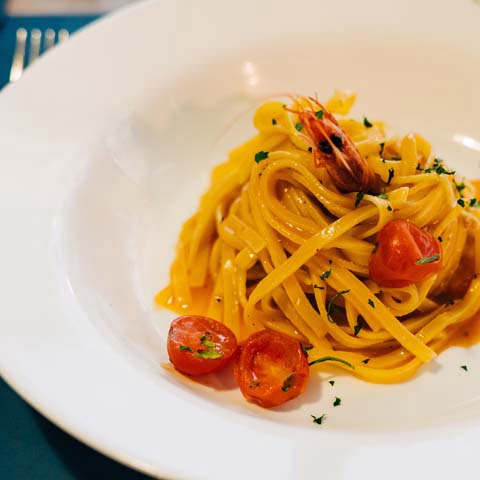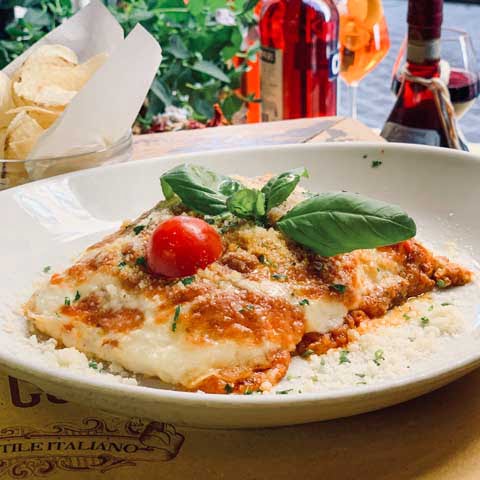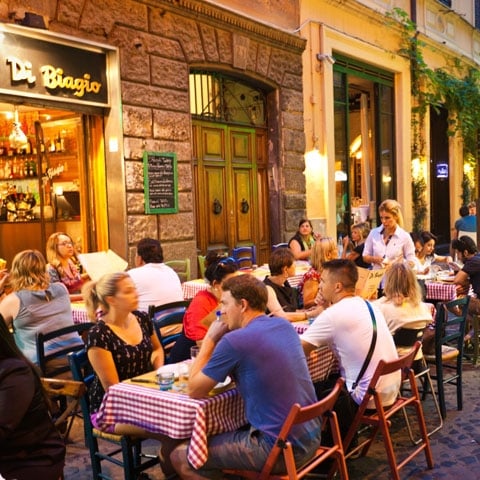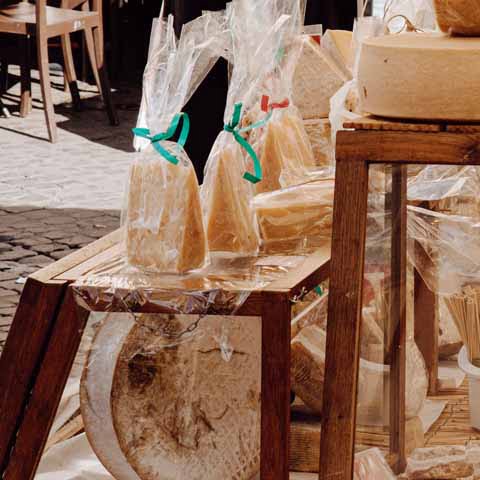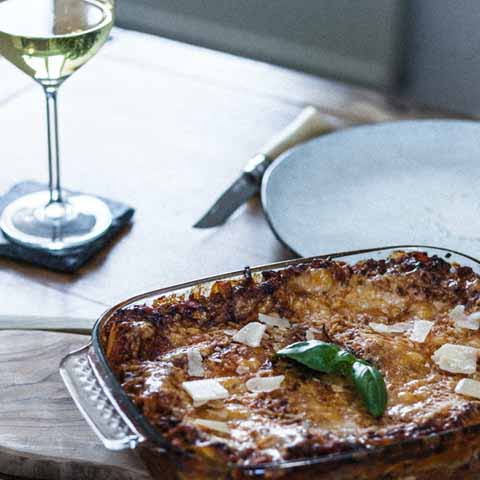During the reign of the Roman empire, a wide variety of cultures were brought together through recruitment for the Roman army. As the city of Rome grew larger, it became known for its multiculturalism, and as a result, the cuisine of modern-day Lazio is highly influenced by the various cultural influences of those who lived and worked in Ancient Rome. Meals in Lazio are known for diverse flavors, a sophisticated sensibility, and the usage of local produce and meats.
The cuisine of Lazio is one of Italy’s most well-known regional styles of cooking, thanks mostly to two incredibly famous and delicious pasta dishes – Spaghetti alla Carbonara and Bucatini all’Amatriciana. These dishes, which highlight a staple ingredient called guanciale (jowl bacon), are reflective of the region’s tendency to prefer rich, meaty flavors and local, seasonal ingredients.
Much of Lazio’s cuisine is characterized by cured pork meats, olive oil, herbs, pasta, anchovies, and fresh produce. The hills of the region provide lush, fertile land on which to grow unique vegetables such as Pontecorvo peppers, Monti Cimini walnuts, and Montalto di Castro artichokes, which are frequent stars of top dishes throughout the area.
Many of Lazio’s food products are protected and preserved by various types of certifications, ensuring the purest and highest quality of ingredients. Yet despite its sophisticated reputation, many recipes in Lazio are based on peasant traditions – the practice of using lesser cuts of meat and maximizing each ingredient’s potential.
A common location to enjoy meals in Lazio are fraschette – small taverns featuring limited, simple menus at affordable prices. Many locals visit these restaurants daily to hang out with friends while enjoying a glass of wine.
APPETIZER/ENTRÉE
As with other regions of Italy, meals in Lazio typically begin with antipasti. However, during this appetizer course, the cold cuts of Lazio are particularly valued. A must-have at every meal, the local meats such as prosciutto and other cured pork are stars of the antipasti.
One of the most unique cold cuts in Lazio is Coppiette. Strips of pork or horse meat are dried and spiced with hot chili pepper or savory paprika to make this style of meat, which pairs perfectly with local red wine. Eaten within an antipasti platter or on its own as a snack, Coppiette is a staple food in Lazio.
Another popular appetizer is Salsiccia di Monte San Biagio (Sausage of Monte San Biagio). Served as an appetizer, as a topping for crostini, or alongside other grilled meats for a hearty second course, these sausages are unique in that they are spiced with local red peppers.
Other top choices for appetizers and entrees in Lazio are soups made of broth and flavored simply with fresh herbs, cheese, beans, and salty pork, as well as fresh produce served as salads or alone, seasoned with potent flavors like anchovies, garlic, and basil.
FIRST COURSE
For the pasta course in Lazio, travelers can expect to enjoy a variety of pasta dishes featuring the region’s top ingredients – pecorino cheese, fresh tomatoes, local olive oil, and spicy peppers. The specific types of pasta used throughout the region are known for their ability to hold hearty sauces.
The key pasta dishes in the region are Bucatini all’Amatriciana and Spaghetti alla Carbonara. Bucatini all’Amatriciana is a common starter dish to nearly every meal. Featuring bucatini pasta, this dish is made with fresh tomato sauce, chili peppers, pecorino cheese, and guanciale. Spaghetti alla Carbonara is a world-famous dish featuring a sauce made of eggs, pepper, guanciale, and pecorino tossed in long pasta such as linguine, fettucine, or spaghetti. While other versions of the recipe throughout the world use pancetta or bacon, the traditional variety must be made using the signature guanciale.
While in Rome, adventurous travelers must try la pajata. Only found in local Roman trattorias, this rigatoni pasta dish is made with the intestines of calves who have only been fed mother’s milk. The sauce created by the intestines results in a flavor that is cheese-like and spicy. La pajata is a truly traditional and unique Roman pasta dish.
The first course throughout Lazio can also feature other forms of starch such as wheat, potatoes, and rice. Whether stuffed rice balls, gnocchi potato dumplings, or flavorful rice, a Lazio meal without pasta will surely feature some sort of starch.
SECOND COURSE
The second-course dishes in Italy are known as the meat courses. In Lazio, popular meats include chicken, lamb, rabbit, pork, beef, and veal.
One of the most popular second-course dishes in Lazio is Coda alla Vaccinara (oxtail stew). This stew is flavorful and hearty, made with braised oxtail, tomatoes, celery, herbs, and seasonal vegetables.
Seafood is a common ingredient for second-course dishes in Lazio because there is a large amount of readily available and inexpensive seafood throughout the region. Lower cost shellfish, fish, and cured seafood are all common ingredients.
SIDES
Found at nearly every table in Lazio is a local delicacy – Pecorino Romano cheese. Made from goat’s milk, this cheese is grated on almost every pasta dish, served sliced among cold cuts as part of antipasti, or enjoyed alone with a glass of wine.
DESSERTS
For dessert, people in Lazio enjoy sweet treats such as dense, sweet gelato and freshly baked pastries. Some of the region’s most characteristic pastries include Maritozzi – a traditional wedding dessert featuring fresh whipped cream and Ciambelle Ruzze – small donuts made with white wine and anise.
STREET FOODS
While Lazio has a variety of wonderful local cafes and elegant restaurants, sometimes the best way to taste a region’s cuisine is by enjoying street foods. In Lazio, street foods are rich, savory, and portable.
In Rome, Porchetta dei Castelli Romani e Ariccia is considered the king of street food. Consisting of roasted, boneless pork, this dish is a common snack for Romans on the go. Served alone or as a filler for paninis, it pairs perfectly with vegetables.
Another popular local delicacy is Tielle di Gaeta – salty pies made of pizza dough that are filled with olives and freshly caught seafood.
WINES
Lazio is uniquely qualified for growing grapes because the region features a near perfect mix of fertile soil, winds, proper amounts of rain, and a good balance of temperature. Though the environment of Lazio lends itself to growing a variety of amazing grapes, the region is perhaps one of the least known wine producing areas in Italy.
When traveling to Lazio, wine lovers will find there is a long history of white wine making in the region. Some of the most popular whites from Lazio include Castelli Romani, Tuscia, Colli della Sabina, Est!Est!!Est!!!, and Moscato di Terracina.
As for red wines, a few notable varieties include Nero Buono di Cori and the Cesanese.
Don't just see Italy, live it.
Your dream trip to Italy has never been closer
No more endlessly scrolling travel sites. Our travel experts will craft the perfect, one-of-a-kind trip just for you.

300+
DESTINATIONS
We offer more Italian destinations than any travel site. Do and see more with Trips 2 Italy.
1 (of a kind)
ITINERARIES
Because your dream trip to Italy should be designed for you, not for the masses.
100%
PEACE OF MIND
From flights and accommodations, to food and activities - we take care of every detail.
